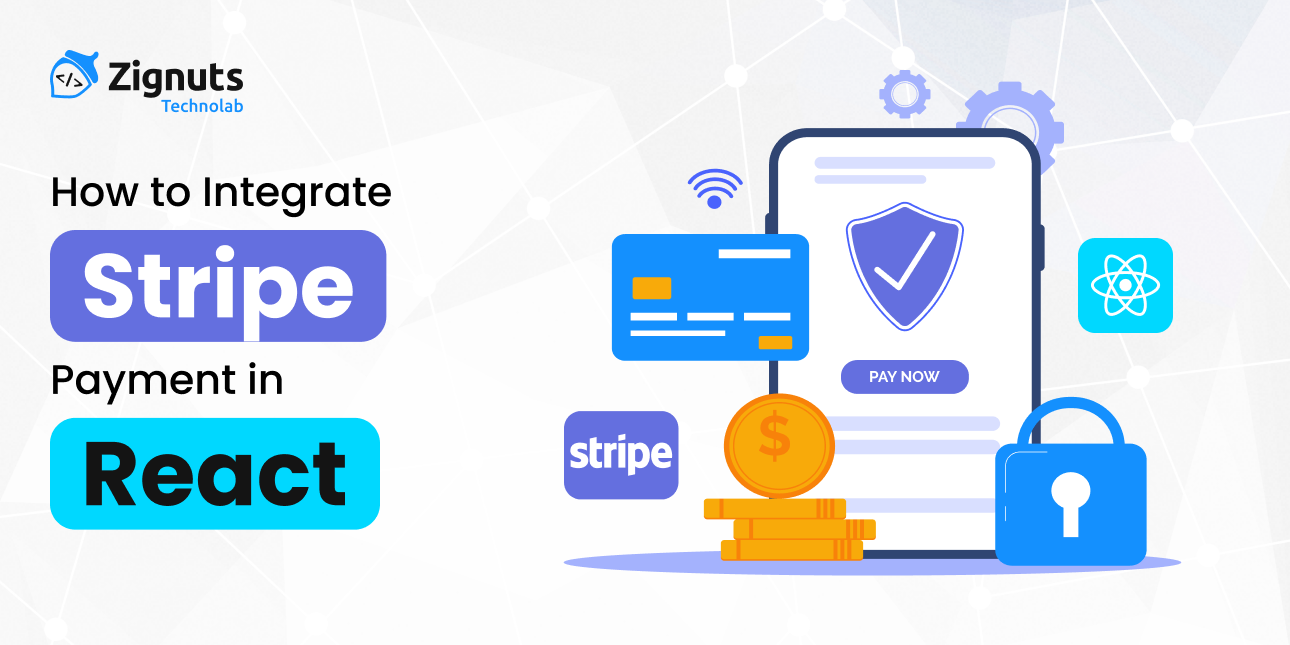In today's digital marketplace, accepting online payments is crucial for any e-commerce or service-based application. Stripe Payment Integration in React.js has become the go-to solution for developers who want to implement secure, reliable payment processing without the complexity of handling sensitive financial data directly.
Whether you're building an online store, subscription service, or any application that requires payment processing, this comprehensive guide will walk you through everything you need to know about implementing Stripe payments in your React.js application.
What is Stripe Payment Integration in React.js?
Stripe Payment Integration in React.js refers to the process of incorporating Stripe's payment processing capabilities into a React application. Stripe is a powerful payment platform that handles the complex aspects of online transactions, including security, compliance, and various payment methods.
When you integrate Stripe with React.js, you're essentially creating a seamless payment experience where users can make purchases directly within your application. The integration involves both frontend React components for collecting payment information and backend processing to handle the actual transaction securely.
Stripe provides developer-friendly APIs and pre-built UI components that make it easier to implement payment functionality without starting from scratch. This approach ensures PCI compliance and robust security while maintaining a smooth user experience.
Advantages of Stripe Payment Integration in React.js
Implementing Stripe Payment Integration in React.js offers numerous benefits that make it the preferred choice for modern web applications:
Security and Compliance
Stripe handles PCI compliance automatically, which means you don't need to worry about storing or processing sensitive payment information on your servers. This significantly reduces security risks and compliance overhead.
Developer Experience
The Stripe API is well-documented and provides excellent developer tools, including test environments, webhooks, and comprehensive error handling. The React integration is particularly smooth thanks to official Stripe libraries.
Payment Method Flexibility
Stripe supports multiple payment methods, including credit cards, debit cards, digital wallets like Apple Pay and Google Pay, and various local payment methods depending on your target markets.
Global Reach
With support for over 135 currencies and payment methods popular in different regions, Stripe enables you to accept payments from customers worldwide.
Real-time Processing
Transactions are processed in real-time, providing immediate feedback to both customers and your application about payment status.
Robust Analytics
Stripe's dashboard provides detailed analytics and reporting features that help you understand your payment patterns and optimise your checkout process.
Prerequisites Before Starting
Before diving into Stripe Payment Integration in React.js, ensure you have the following prerequisites in place:
Technical Requirements
- Basic knowledge of React.js and JavaScript
- Understanding of Node.js and Express.js for backend development
- Familiarity with RESTful APIs and HTTP requests
- A code editor (VS Code recommended)
- Node.js (version 14 or higher) is installed on your system
Stripe Account Setup
- Create a free Stripe account at stripe.com
- Verify your email address and complete the account setup
- Obtain your API keys from the Stripe dashboard
- Familiarise yourself with Stripe's test mode for development
Project Structure
Have a React.js project ready or create a new one using Create React App. You'll also need a backend server (Node.js with Express.js) to handle server-side payment processing.
Step-by-Step Guide to Stripe Payment Integration in React.js
Step 1: Installation and Setup
First, install the necessary Stripe packages for both frontend and backend:
Frontend Dependencies:
Backend Dependencies:
Step 2: Backend Setup
Create your backend server to handle payment processing:
Step 3: Frontend React Setup
Create your main payment component:
Step 4: Create the Checkout Form Component
Step 5: Testing with Stripe Test Cards
Stripe provides test card numbers for development:
- Successful payment: 4242 4242 4242 4242
- Payment requires authentication: 4000 0025 0000 3155
- Payment is declined: 4000 0000 0000 9995
Use any future expiration date, any 3-digit CVC, and any postal code for testing.
Example of Complete Stripe Payment Integration in React.js
Here's a more comprehensive example that includes error handling and a better user experience:
Common Issues and Troubleshooting Tips
When implementing Stripe Payment Integration in React.js, you might encounter these common issues:
API Key Issues
- Ensure you're using publishable keys on the frontend and secret keys on the backend
- Double-check that your environment variables are properly set
- Remember that test and live keys are different
CORS Errors
- Configure CORS properly in your backend server
- Ensure your frontend and backend URLs are correctly set up
- Check that your API endpoints are accessible
Payment Intent Errors
- Verify that amounts are in the smallest currency unit (cents for USD)
- Ensure proper error handling for failed payment attempts
- Check that your Stripe webhook endpoints are configured correctly
Element Loading Issues
- Make sure Stripe.js loads before attempting to use Stripe elements
- Check that your publishable key is valid and properly formatted
- Verify that the Elements provider wraps your payment components
Best Practices for Secure Payment Integration
Server-Side Security
- Always process payments on the server side, never on the client
- Use HTTPS for all payment-related communications
- Implement proper input validation and sanitisation
- Store sensitive data securely and follow PCI compliance guidelines
Client-Side Security
- Never expose secret API keys in frontend code
- Validate form inputs before sending to the server
- Implement proper error handling and user feedback
- Use Stripe's built-in fraud prevention features
User Experience
- Provide clear loading states during payment processing
- Display helpful error messages for failed transactions
- Implement proper success and failure page flows
- Consider implementing saved payment methods for returning customers
Testing and Monitoring
- Thoroughly test with various payment scenarios
- Set up proper logging and monitoring for payment events
- Use Stripe's webhook system for reliable payment status updates
- Implement proper retry logic for failed API calls
Conclusion
Stripe Payment Integration in React.js provides a robust, secure, and user-friendly solution for handling online payments. By following this comprehensive guide, you've learned how to set up both the frontend and backend components necessary for a complete payment system.
The integration process involves setting up your Stripe account, installing the necessary packages, creating server-side endpoints for payment processing, and implementing React components that provide a smooth checkout experience. With proper implementation of security best practices and thorough testing, you can create a payment system that customers trust and use confidently.
Remember to always test thoroughly in Stripe's test mode before going live, implement proper error handling, and follow security best practices to protect both your application and your customers' sensitive information.




.svg)

.svg)



.svg)

.svg)


.png)






.png)
.png)
.png)
.png)
.png)
.png)
.png)
.png)
.png)



